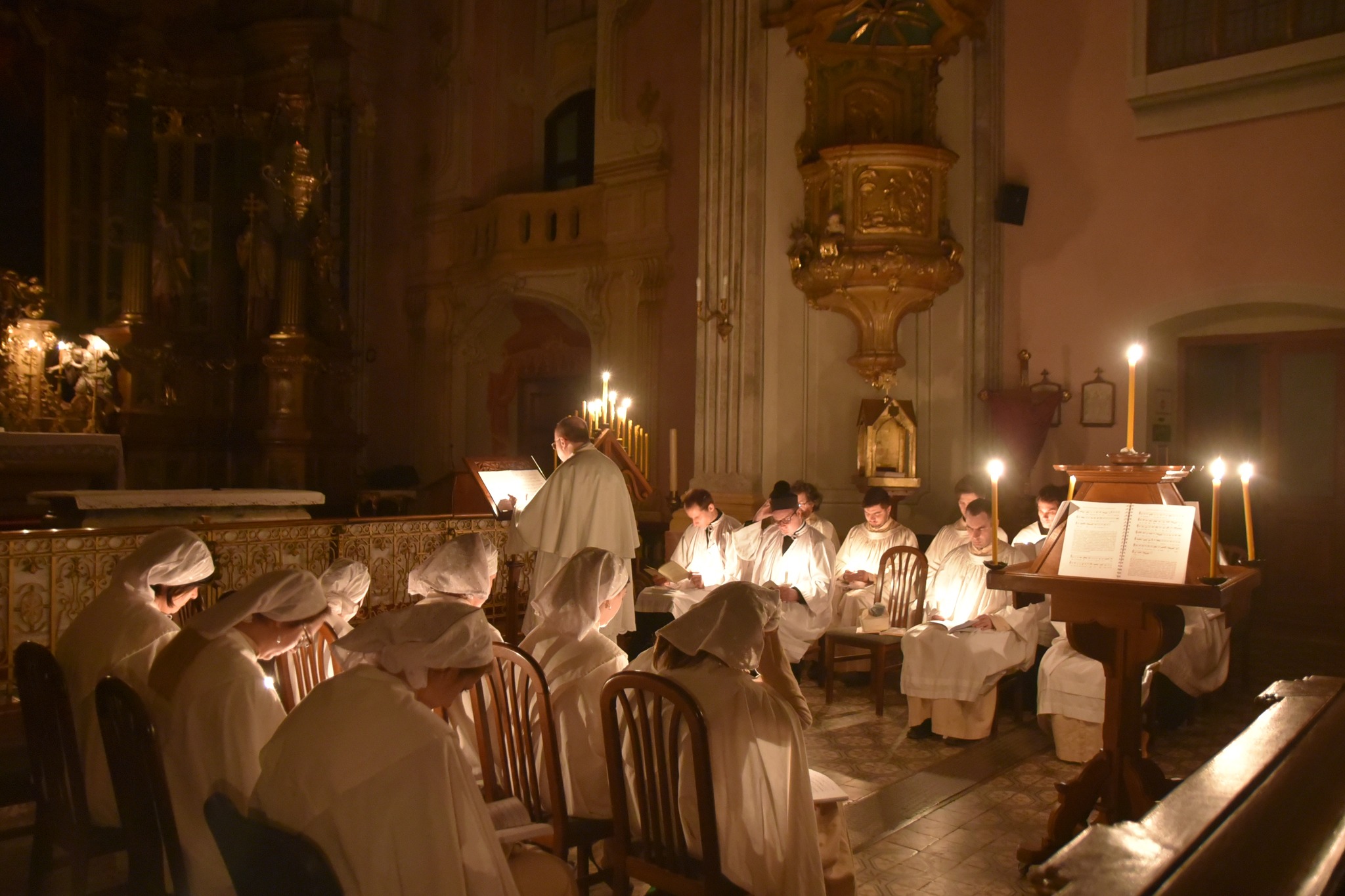Two great “hushes” fall in the Christian liturgical calendar. The first, Christmas Eve, is marked by well-known music, including the iconic Silent Night.
But the music expressing the hush of Holy Week will not jingle from loudspeakers in stores during Lent. Instead, the music that frames the “three days” of services known as The Tridiuum (from Maundy Thursday to Easter Vigil) form an ancient bouquet of sound: tunes stark and tender that seem older than their medieval roots. Of them, none pierces the heart more than Pange lingua, a chant for the liturgy of Maundy Thursday that commemorates the Last Supper and the institution of the Eucharist.

The six phrases of Pange lingua rise across an octave, clustering in gentle curves around the interval of a fourth to form melodic lines so ravishing, so ponderous, yet simultaneously light, as to be indescribable. Once the melody of Pange lingua is knitted to words by St. Thomas Aquinas, a hymn arises that nearly breaks the heart with its poignancy while presenting what scholars have called “logical neatness, dogmatic precision, and force of almost argumentative statement.”
I did not grow up knowing Pange lingua. Rather, its name joined hundreds of other terms I studied as an undergraduate for fill-in-the-blank tests in music history. Perhaps that’s why I remember with clarity the first time I sang Pange lingua during a Maundy Thursday service years ago. It was my first full experience of the Triduum liturgies. Hank and I both were singing in the choir, so my focus was on getting the sheets of alto parts in the right order in my ring binder. Our choir mistress assumed everyone knew the hymns, and those were not practiced.
But then, in the actual service, in a darkened church, the opening notes whispered themselves, repeating, dropping down a step, and rising up. An electric realization stopped an involuntary tear that was forming: this was it—the hymn taken from a chant I spelled so carefully on tests about the Western liturgical cycle. Now, that “name” was shining new light on everything.
If you do not know Pange lingua, you may wish to consider it first as a finely balanced, fulfilling melody. Simply to hum it is a satisfying experience. (In fact, humming melodies is a great way to take them into the heart.) The masterful words by Aquinas are vividly descriptive, poetically piercing, and theologically rich. They sing themselves even without a melody. Placed together, the chant and text of Pange lingua transform themselves into a rare treasure whose power extends itself long past the moment of its last reverberation which, after all, is what liturgy seeks, and is designed, to do.
Sing, my tongue, the Savior’s glory,
Of His Flesh, the mystery sing;
Of the Blood, all price exceeding,
Shed by our Immortal King,
Destined, for the world’s redemption,
From a noble Womb to spring.
Pange lingua was also the subject of a Friday Performance Pick a few years ago.




As a child I waited all year to hear Pange Lingua because I love it so much but didn’t know when it was sung. I finally realized that at the end of Holy Thursday Mass, we sing it as we process out, following the Eucharist to another altar decorated like a garden. Unfamiliar Latin plus nighttime darkness reduce this beautiful hymn to a meditative hum which trails off into silence and prayer. Thank you for this post!
Beautiful!